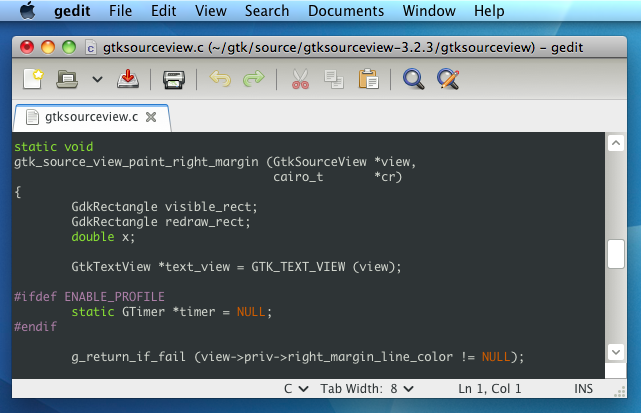I would like to introduce my latest project that I have spent some time on developing in the last weeks. cldoc is a clang based documentation generator for C and C++. I started this project because I was not satisfied with the current state of documentation generators available for C++, and I thought it would be a fun little project (turns out it was fun, but not that little). What I was looking for is a generator which does not require any configuration or me writing a whole lot of special directives and instructions in my code. It should also be robust against complex C++ projects and not require me to tell it by hand how to interpret certain parts if its parser is too limited (hence using clang). Finally, I wanted a modern output, nice coverage reporting, integrated searching, simple deployment and integration.
I think cldoc addresses most (if not all) of these features in its current stage. Even if it’s still in the early stages of development, it’s pretty complete and seems to work well medium sized projects. I’m sure it’s not without bugs, but those can be fixed!
Features:
- Uses clang to robustly parse even the most complex C++ projects without additional effort from the user.
- Requires zero configuration.
- Uses markdown for documentation formatting.
- Generates an xml description of the API which can be reused for other purposes.
- Uses a simple format for documenting your code.
- Supports cross-referencing in documentation.
- Generates a single file, javascript based web application to render the documentation.
- Integrates seamlessly with your existing website.
- Lightning fast client-side searching using a pregenerated search index.
- Generates a formatted documentation coverage report and integrates it in the website.
I also wanted to detail here some of the development, since I always like to take the opportunity to use “modern” technology when starting a new project. The cldoc utility itself is a pretty plain and simple python application. Nothing particularly interesting about that. It uses the libclang python bindings to parse, scan and extract all necessary information. It then generates a set of xml pages describing fully the namespaces, types, methods, functions etc that were scanned. It also does some fancy cross-referencing and generates a suffix-array based search index in a json file. The search index is fetched on the client and traversed locally for very fast searching of documentation.
I had some more fun with the web application though. What I wanted was something with the following features:
- Easy to deploy
- Easy to integrate in an existing website
- Doing things on the client as much as possible
- Render the website from the generated xml
- Still allow exporting a static website instead of a dynamic one
As a result, the generated html file is really just a stub containing two containers. All the rest is done in javascript. For this project I went with coffeescript. I had played with it before, and it certainly has it quirks. The fact is though it does make me a lot more productive than writing javascript directly. Generating html is still a pain, but it’s shorter to write. Besides that I obviously use jQuery (can’t do anything without really), and showdown (a javascript markdown parser).
What the webapp basically does is fetch the xml page using AJAX and format/render it on the page. It then uses html5 history to implement navigating the documentation without actually going to another page. Navigation around simply fetches more xml pages and renders them. It caches the fetched xml and rendered html so things end up being pretty fast. One other neat thing is the implementation of local search. When a search is initiated, the search database is fetched from the server. This database is basicly a suffix array encoded in json. Currently it’s quite basic, it only indexes symbols. Then, a html5 webworker is started which does the actual searching, so that the browser is not blocked during this process. For medium sized projects, I don’t think there is any real need for this, but at least now it will scale pretty well. Search results are then communicated back to the main javascript thread and rendered.
One nice side effect of this implementation is that it becomes very easy to integrate the documentation with an existing website in an unobtrusive way. An existing website can simply add two containers to their html and load the js app. The rest of the website will still function normally. The only real issue currently would be that if the original website also uses html5 history, they will currently conflict. This is something to resolve in the near future. Another “issue” is that it’s very hard to separate css styles completely, especially if not designed as such from the start. The cldoc stylesheet will only apply styles to the cldoc containers, but of course, the containing website will still have styles which can cascade into the cldoc containers. Anyway, not my problem I guess :)
With regard to the last bullet point of my little list above, the whole website can also be generated statically quite easily. This is not implemented at this time, but the same javascript web app can be run on node.js without too much effort. Each page can then be rendered using the exact same app (using jsDOM) and then exported as a html file.
Well, that’s it for now. Please have a look at it and let me know what you think. The project is completely hosted on github. Website: http://jessevdk.github.com/cldoc, source: https://github.com/jessevdk/cldoc.



